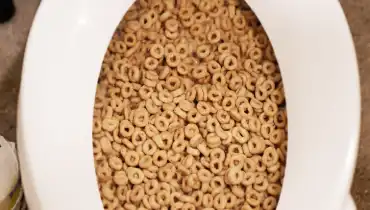Can You to Dispose of Food Down the Toilet?
Can You to Dispose of Food Down the Toilet?
Blog Article
How do you feel on the subject of Is it safe to flush food (especially rice) down the toilet??

Intro
Lots of people are frequently faced with the dilemma of what to do with food waste, especially when it concerns leftovers or scraps. One common inquiry that emerges is whether it's fine to flush food down the bathroom. In this post, we'll delve into the reasons that people may consider purging food, the consequences of doing so, and alternative approaches for proper disposal.
Reasons why people could take into consideration purging food
Absence of understanding
Some individuals might not understand the potential harm triggered by purging food down the toilet. They might incorrectly believe that it's a harmless method.
Ease
Purging food down the commode might feel like a fast and simple option to disposing of undesirable scraps, particularly when there's no close-by trash can available.
Idleness
Sometimes, people may simply select to flush food out of sheer negligence, without considering the effects of their actions.
Effects of flushing food down the toilet
Environmental impact
Food waste that ends up in rivers can contribute to air pollution and injury marine ecosystems. Furthermore, the water utilized to flush food can strain water resources.
Plumbing issues
Flushing food can result in clogged up pipelines and drains, triggering expensive plumbing repair work and aggravations.
Sorts of food that need to not be flushed
Fibrous foods
Foods with coarse textures such as celery or corn husks can obtain tangled in pipelines and trigger clogs.
Starchy foods
Starchy foods like pasta and rice can absorb water and swell, bring about obstructions in pipelines.
Oils and fats
Greasy foods like bacon or food preparation oils ought to never ever be purged down the toilet as they can solidify and create blockages.
Correct disposal methods for food waste
Utilizing a waste disposal unit
For homes geared up with waste disposal unit, food scraps can be ground up and purged with the pipes system. Nonetheless, not all foods appropriate for disposal in this fashion.
Recycling
Particular food product packaging materials can be recycled, minimizing waste and reducing environmental influence.
Composting
Composting is an eco-friendly method to dispose of food waste. Organic materials can be composted and used to improve dirt for gardening.
The significance of proper waste management
Lowering environmental harm
Appropriate waste management techniques, such as composting and recycling, help minimize contamination and preserve natural deposits for future generations.
Safeguarding pipes systems
By staying clear of the method of flushing food down the bathroom, homeowners can stop costly plumbing repair work and preserve the stability of their plumbing systems.
Final thought
To conclude, while it might be appealing to flush food down the toilet for benefit, it is necessary to recognize the possible effects of this action. By adopting correct waste management practices and throwing away food waste properly, people can add to much healthier plumbing systems and a cleaner environment for all.
FLUSH FOOD DOWN THE TOILET?
FLUSHING FOOD CAN CAUSE BLOCKED DRAINS IN YOUR HOME
All of the plumbing fixtures in your home are connected to the same sewer pipe outside of your home. This outdoor sewer pipe is responsible for transporting all the wastewater from your home to the Council sewer mains. Even small pieces of food that go down the kitchen sink can cause problems for your sewer. It should therefore be obvious that flushing larger bits of food, such as meat, risks a clog in either the toilet itself or the sewer pipes. Flushing greasy food is even more problematic because oil coagulates when it cools, coating the interior lining of your pipes.
THE TOILET IS NOT A BIN
Food isn’t the only thing that people shouldn’t be flushing down the toilet. People use the toilet to dispose of all kinds of things such as tampons, makeup wipes, dental floss, kitty litter and even underwear. Water goes to great lengths to educate residents about the high costs and stress placed on wastewater treatment systems simply from people flushing the wrong stuff down the toilet. It costs taxpayers millions of dollars each year, and homeowners thousands in blocked drain repairs.
FLUSHING FOOD IS A WASTE OF WATER
Flushing food is a waste of our most precious resource - water. In June this year Level 1 water restrictions were introduced to protect water supply from drought conditions. Much of New South Wales continues to be affected by prolonged drought with recent figures revealing up to 97 per cent of the state remains in drought. Depending on whether you have a single or dual flush toilet, every single flush uses between five and 11 litres of water. In the current climate this is a huge amount of water to be wasting on flushing food that should be placed in the bin (or better yet, the compost).
https://www.jabplumbingsolutions.com.au/blog/can-you-flush-food-down-the-toilet

Do you enjoy reading about Flushing Food Down the Toilet?? Make feedback directly below. We would be glad to find out your opinions about this blog. We are looking forward to see you back again in the near future. Be sure to set aside a second to distribute this blog posting if you liked it. Thanks for your time. Don't forget to come visit our site back soon.
Schedule Today Report this page